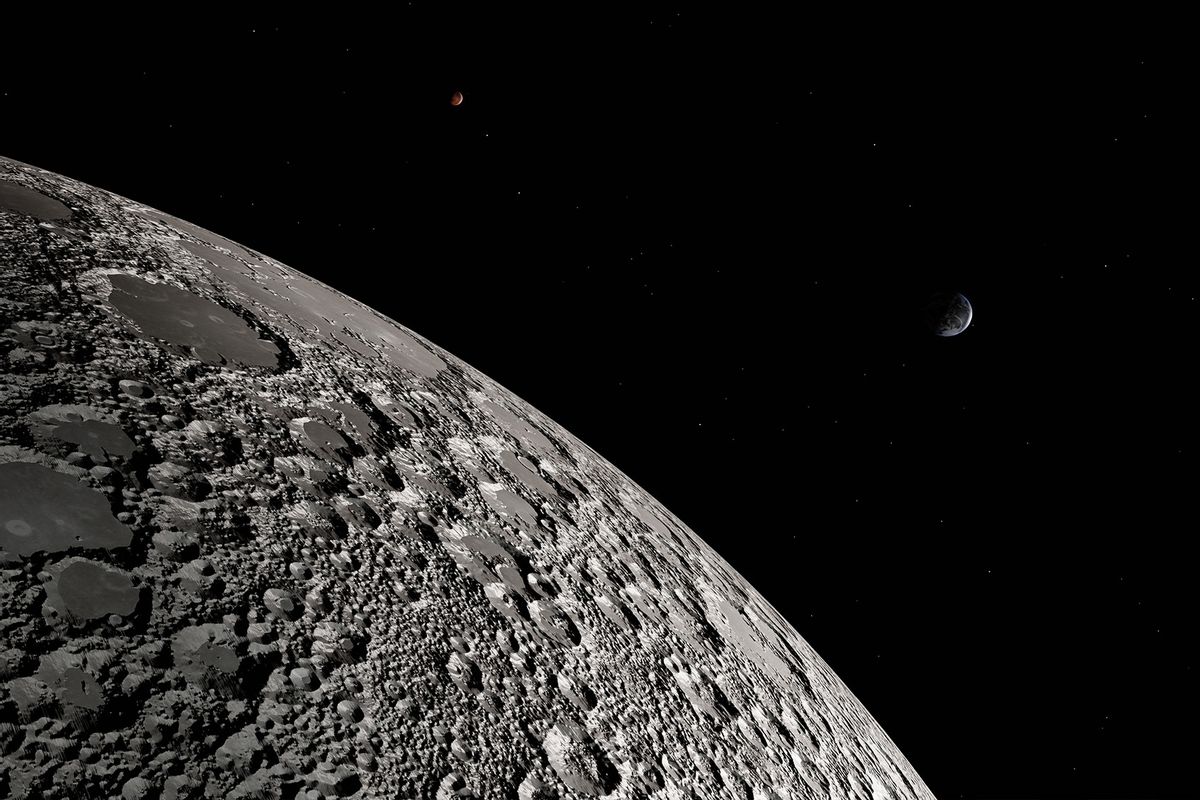New Moon research yields tantalizing clues about its geological history

The Moon has a long, chaotic geological history almost as old as Earth itself. Every crater, rock and speck of dust on the Moon tells a story, but because it’s not exactly close to our planet, this history is a little harder to study than say, the Grand Canyon.
Astronomers theorize that Moon craters were formed from celestial objects like asteroids and comets crashing into its surface. While this process also formed some of the rocks and dust — known as regolith — astronomers also know that the Moon was covered in this stuff before any impact events occurred. As such, astronomers and geologists have long dreamed of the day when they could analyze the regolith in great detail.
Now a recent study in the journal Matter and Radiation at Extremes is providing scientists with unprecedented information about the lunar regolith based on 1.73 kilograms delivered from a vast lunar plane known as the Oceanus Procellarum. In the process, they may have solved lingering mysteries about the history of the Moon itself.
The sample — collected by the Chinese mission Chang’e, which was the first to visit the Moon since the Soviet Union’s final Luna mission in 1976 — included the discovery of high-pressure silica polymorphs, or crystals formed from multiple molecules of the same compound. Specifically, the silica polymorphs in question were seifertite and stishovite, which are chemically identical to quartz.
At first glance this was puzzling, since high-pressure minerals like silica are rare among the lunar regolith, as the it was not believed to have experienced pressures high enough. Yet the scientists believe they solved this mystery by determining that the silica polymorph known as stishovite will turn into seifertite when experiencing high pressure before evolving into a third silica polymorph that was present in the sample: α-cristobalite.
“In other words, seifertite could form from α-cristobalite during the compressing process, and some of the sample transformed to stishovite during the subsequent temperature-increasing process,” author Wei Du of the Chinese Academy of Sciences said in a statement. As the study itself explained, the finding of high pressure silica polymorphs in that sample “highlights the potential of multiplying high-pressure minerals in lunar materials, which could provide new information about impact processes on the Moon and other planetary bodies in the early Solar System.”
“New minerals discovered in lunar returned samples and lunar meteorites can also reflect their formation conditions.”
The Chang’e’s analysis yielded other interesting discoveries as well, such as shedding light on the development of rare silica polymorphs. The researchers also discovered a new lunar mineral, appropriately dubbed Changesite-(Y). It is transparent, colorless and made primarily of phosphorus formed as columnar crystals. The sample was sufficiently well-preserved that scientists could even measured the peak pressure and impact duration (between one-tenth of a second to a second) of the collision that created the sample of this new mineral. As a result, they believe the crater which created this sample was between 3 and 32 kilometers wide, depending on the angle at which struck the lunar surface.
“New minerals discovered in lunar returned samples and lunar meteorites can also reflect their formation conditions, providing key information about the magmatic activity, thermal evolution, as well as impact history of the Moon,” the authors explain in their study.
Some of the samples were analyzed using a FEI Scios dual-beam focused ion beam/scanning electronic microscope equipped with an energy dispersive spectrometer. Other samples were studied using an electron probe micro-analyzer. The scientists hope this type of sophisticated equipment can be used to perform future scientific research on lunar geology.
Want more health and science stories in your inbox? Subscribe to Salon’s weekly newsletter Lab Notes.
“New minerals discovered in lunar returned samples and lunar meteorites can also reflect their formation conditions.”
“These new findings emphasize the significance of studies on high-pressure minerals in lunar materials and the special nature of lunar magmatic evolution,” the authors conclude in their abstract.
Other This is not the only recent study to shed light on the mysteries of the Moon’s composition. A study published last month in the journal Nature Geoscience looked at the magma deposits on the Moon’s surface in order to understand why they have such high concentrations of titanium. While some scientists speculated they could have derived from the Moon’s mantle, scientific analysis of the magma find they do not match the composition of the Moon’s magma and are too dense to be capable of eruption.
Instead, the scientists theorized that the titanium-rich magmas exist on the Moon’s surface because ilmenite-bearing cumulates (an igneous rock formed by magma) partially melted, then underwent extensive modification on an elemental and isotopic level while flowing through the fluids in the lunar mantle.
At the same time, the scholars acknowledged one potentially serious limitation of their study, namely that “this model does not fully replicate lunar melt–solid interaction.” Yet the recent study is nevertheless important because, as explained in a statement to SciTechDaily by co-lead author Dr. Martijn Klaver, a research fellow at the University of Münster Institute of Mineralogy, “Until now models have been unable to recreate magma compositions that match essential chemical and physical characteristics of the high-Ti basalts. It has proven particularly hard to explain their low density, which allowed them to be erupted some three and a half billion years ago.”
Not all of the recent Moon-related news has been positive. Earlier this month the first Moon-landing effort since the Apollo missions experienced a “critical loss.” Peregrine Mission One failed after it experienced a critical technical difficulty in their propulsion systems, which made it impossible for the Peregrine lunar lander to touch down on the lunar surface. The scientists also struggled to generate electricity for the struggling spacecraft, making it a terrible disappointment for the first attempted commercial moon landing under NASA’s Commercial Lunar Payload Services program.
Read more
about the Moon:

